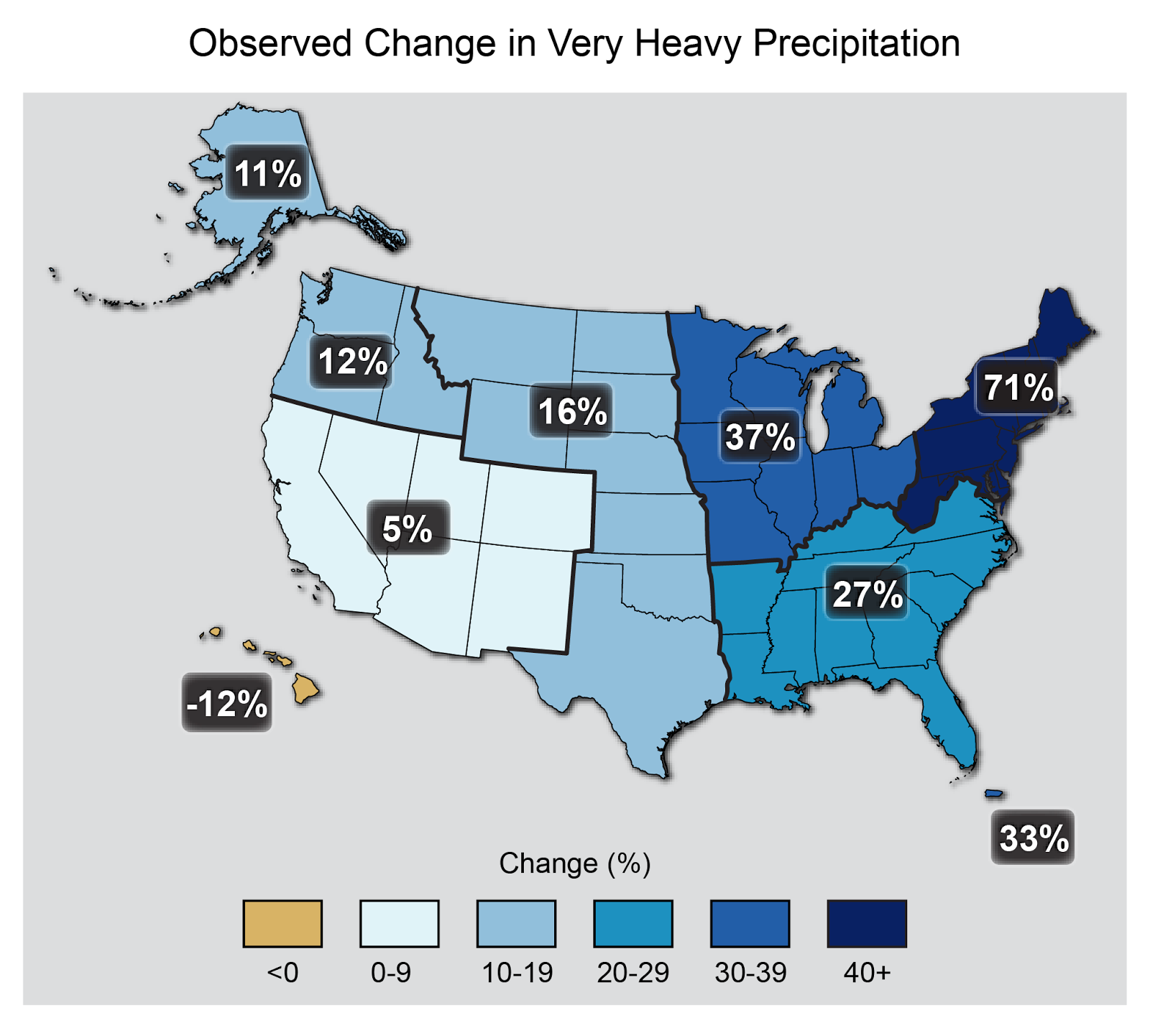Since the 19th century, average US temperatures have risen by 1.3°F to 1.9°F. (Note, though, there have been some fluctuations here and there: in the 1960s and 1970s, temperatures dipped, partly due to the cooling effect of sulfate pollution that was eventually cleaned up.)Also of note, major rainfall events are bringing more rain in the Midwest:
Recent decades have been even hotter: since 1991, virtually every part of the country has been warming, with the biggest temperature increases occurring in the winter and spring.
So that 100-year storm is no longer a 100-year storm. Finally, climate change will impact agriculture, some for better, some for worse:
I anticipate longer stretches of really cool, wet weather, along with longer stretches of really hot, dry weather. The timing of each will be key. A couple of general points:
The report notes that warmer temperatures have lengthened the growing season in the Midwest by almost two weeks since 1950. What's more, higher concentrations of carbon-dioxide in the atmosphere have helped boost plant growth.
Those benefits are expected to last another few decades. But climate change will also have negative impacts that will start to hurt agriculture. An increased number of extremely hot days could damage crops. And heat waves during pollination could reduce corn and soy yields.
As such, the report recommends that farmers in the Midwest start preparing for projected climate impacts now — before the negative impacts start dominating.
Wheat genetics will have to change to continue to be in any way viable in Ohio.
Any investment in tile will be important on our heavier, clay soils.
We don't know how much hotter it's going to get, but it will get hotter.



No comments:
Post a Comment